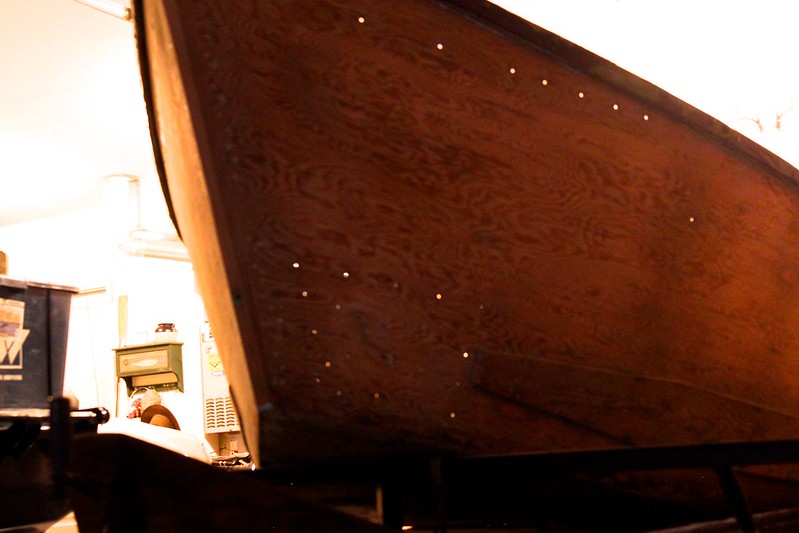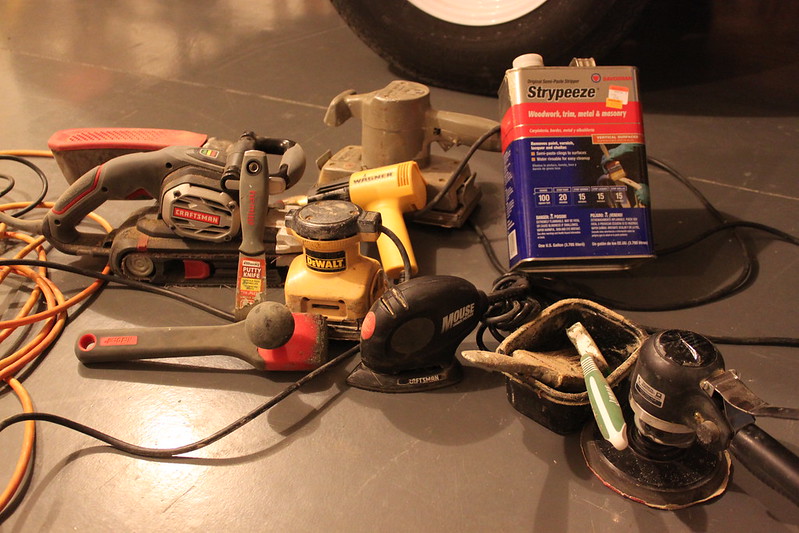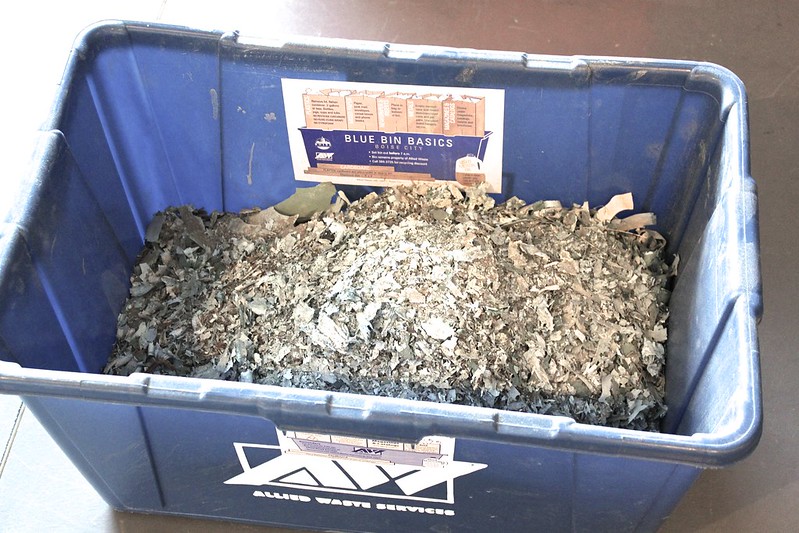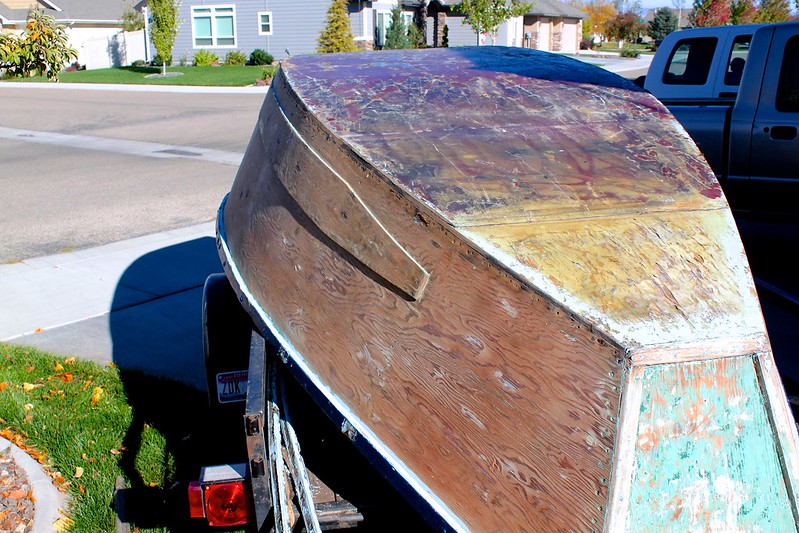Drift Boat Project #3
Here we go again. Taking a little road trip to Oregon this weekend to pick up a genuine piece of driftboat history – a 1960’s era Keith Steele McKenzie boat.
This will be my third driftboat project and I am super excited to have one that was built and used in Oregon by a legendary builder.
My first boat was an early 1990s Tatman kit that I built while living in TN and sold a few years after building it. My second one was all fiberglass of my own design and build. That one was stolen a few years back.
Now I’m living out west and it just won’t do to not have a drift boat. I have spent several months deliberating on whether to build a super nice wooden one, pick up a cheap used glass one, or look for a Woody Hindman or Keith Steele. As luck would have it, this Steele boat showed up on Craigslist and a friend, knowing I really wanted one snagged it before someone else could. An older guy in Oregon had the boat built for him by Keith Steele sometime in the 1960s after Steele gained notoriety for building the first Grand Canyon dories. He had a stroke a few years ago and realized it was time to let the old girl go.
The boat looks all original and complete and the owner says it is solid and perfectly usable as-is but my friend and I are going to go through and restore her. But maybe we’ll do a float or two in her first.
So what do y’all think… should I finish the whole boat with a bright finish or paint the outside? If paint, what color? My first one was hunter green with a tan rub strip and bright inside. I liked that look. Also thinking of maybe a turquoise color. It currently looks to be painted white.
I'd also really like to go by Steve Steele's shop while I am nearby. Anybody know how to contact him?
Tags:
Replies to This Discussion
-
Permalink Reply by CWarmouth on September 21, 2015 at 8:15am
-
Still chipping away (pardon the pun) at removing old paint. Progress is coming slowly but surely. As it turns out there are four different colors/layers of paint on this boat - a sort of sea foam/turquoisy green, a darker sort of hunter green, and then the baby blue. Then there is dark blue on a lot of the trim. In some places it looks like the green layers were removed before the blue went on, but in other places there is a lot of green under there - and it is STUBBORN. The heat gun works like magic on the baby blue but not so much on the green or the dark blue. It is bedded deeply in the grain and it is a pain. As resistant as I have been to using chemical stripper I can see that I might have to in some places.
Here are a few pics from this past week...
-
Permalink Reply by CWarmouth on October 13, 2015 at 4:54pm
-
Thanks for the comment, Mark. Glassing the bottom with biaxial (epoxy and graphite) and the sides with cloth is exactly what I have in mind.
Which brings up another thought for everyone's input: A problem I commonly see with these framed boats is inward fracturing between the frames. I've seen quite a bit of discussion here and other places about encapsulation of the bottom plywood inside and out to help with that. It is generally recommended (or perhaps I should say accepted) for new boat construction, but not old boats. (The problem of course being that water gets trapped between the glass laminations and rots the wood core.)
I am thinking of adding a small piece of kevlar between the frames only in the middle of the boat. In those areas most prone to impact (under the rowing seat and at the rower's feet) It wouldn't encapsulate the whole area but rather offer some protection from that inward fracturing.
What do y'all think of that idea?
-
Permalink Reply by Phillip Westendorf on October 15, 2015 at 6:25pm
-
CW,
Just thinking that if you add an epoxy filet radius (~3/8" R) between the bottom and frames in the sections you plan to add kevlar you can then run the kevlar up the sides of the frames and really tighten things up. I think, however, that glass would work just as well.
Just my two cents worth,
Dorf
-
Permalink Reply by CWarmouth on October 15, 2015 at 7:32pm
-
Hey Dorf, I am really glad you are chiming in here. Thank you, I admire your work and if I hadn't found this Keith Steele boat I was going to start studying your wood strip build and start hitting you up for help on how to build one myself.
That's not a bad idea. I'm thinking that the area I glass (or kevlar) between the frames would be like the size of a doormat you might have inside your house. I'm still wondering if that would encourage rot. Again, I live in SW Idaho where things dry out quickly and take forever to rust or rot. But...?
The rest of the interior will be oil.
-
Permalink Reply by tungsten on October 15, 2015 at 9:25pm
-
Don't think i would bother with any kevlar for the inside,it tends to absorb water so you'd have to cover it with glass anyway.Put some extra on the bottom if you think you need it.
-
Permalink Reply by CWarmouth on October 15, 2015 at 9:36pm
-
Thanks tungsten.
OK, let's forget I said kevlar and say glass instead
I am definitely planning to glass the bottom. My understanding though is that while that will offer protection from scuffs and such, it doesn't do much to help prevent fractures that push up in the event of whacking a rock under your feet. I understand that adding a laminate (like glass or kevlar) to the inside significantly helps that. My concern is whether doing that on this old boat (even applying floor mat sized pieces) will promote rot between those lams or will the wood still be able to "breathe" enough that it won't cause a problem.
What do you think?
-
Permalink Reply by tungsten on October 16, 2015 at 6:16am
-
If you can remove the whole bottom then ya glass the inside before you replace.
matt sized pieces between frames would be tough to seal up.
Glassing the inside of a sheet as a shoe would be a better option.Lots of glass both sides.
-
Permalink Reply by CWarmouth on October 16, 2015 at 7:19am
-
This brings up another question for you or anyone else that wants to jump in. Regarding these plywood shoes: Do you use marine grade for this or just exterior grade. Do you seal it somehow? I like the idea of a sacrificial shoe this way but I worry about A.) Water being trapped between the shoe and the bottom and B.) All the fasteners required to hold it on.
I used UHMWP on my first wooden drift boat and will never do that again. It was a nightmare for all the reasons we already know about. I can see that plywood would not have all the same issues as plastic but still don't want to invite problems.
-
-
Permalink Reply by Rick Newman on October 16, 2015 at 8:02am
-
Your boat is made of Douglas Fir plywood. The successful way to keep the ply from checking is to laminate a 6 oz or 10 oz layer of fiberglass to it. Then either cover the epoxy with varnish or paint to keep it from eventually degrading and failing from UV exposure. Reference Steve Putnam's boat to see what was done there.
Rick N
© 2025 Created by Randy Dersham.
Powered by
![]()



